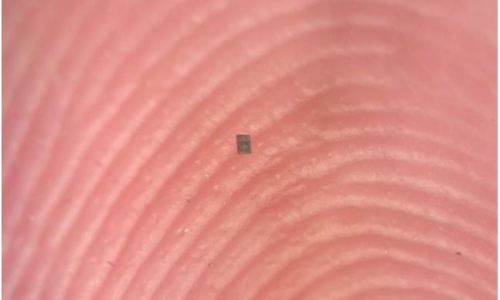


 5:8:41
5:8:41  2024-10-19
2024-10-19  948
948

In hidden cavities beneath the floor of the deep ocean, in the oases created by hydrothermal activity, whole communities of multicellular animals are living their best lives down in the darkness.
The discovery suggests a much more complex hydrothermal ecosystem than we knew about, at ocean depths shrouded in permanent darkness, where crushing pressure and intense cold create conditions deeply inhospitable to air-filled surface-dwelling humans.
"We were surprised because we did not know that there are cavities there," marine biologist Monika Bright of the University of Vienna told ScienceAlert.
"These cavities were described by geologists previously but they have not seen animals and us biologists did not know that the cavities are there but once we tried to collect the rocks so we can search for tubeworm larvae on the surface we broke into the cavities and discovered the animals."
At 2,515 meters (8,250 feet) below the ocean surface, the hydrothermal vent field of the East Pacific Rise is at depths difficult for humans to reach. But this volcanically active area of the seafloor is speckled with holes, through which heat and minerals seep, providing a chemosynthetic basis on which marine food webs proliferate.
Because these environments are so inhospitable, they are also hard to study, limiting our understanding of their nature. We have, however, been learning their secrets in recent years thanks to advances in remote-controlled technology that allows us to send equipment down to bathypelagic depths while remaining safely above the surface.
Bright and her colleagues conducted just such a mission on the research vessel Falkor (too), deploying the remotely-operated vehicle SuB-astian to study the life congregating around the East Pacific Rise vents, taking surveys and collecting samples. They did not expect that they would break through the seafloor to find cavities below.
These cavities were at depths around 10 centimeters (4 inches) below the seafloor, filled with water warmed by volcanic activity to temperatures around 25 degrees Celsius (77 degrees Fahrenheit), and at least 10 species were documented within them, including polychaete worms, sea snails, and the giant tube worm, Riftia pachyptila.
Some of the same species were also found on the surface, and in a lava crack, suggesting a connection between the seafloor, and the cavities below.
"The fact that live large tubeworms were found means that the hypothesis of larvae being able to colonize vents from below has been confirmed," Bright explained. "Some settle if conditions are right in the subsurface, some might with the vent flow be flushed out from the subsurface and colonize the surface."
The conditions in some of the cavities are also very similar to conditions around the vents on the seafloor surface, which could mean that the sub-surface communities are quite extensive. This could mean that the cavity communities may be the source of seafloor vent colonization after a volcanic eruption takes place.
It's not currently known how common these cavities are, or how extensive. But the discovery tells us that we need to be doing more to both understand and protect the animals living far beneath the waves from human activities such as deep-sea mining, the researchers say.
"We are currently thinking about how to do the next steps," Bright said, "for example, developing tools for ROVs to dig deeper into the crust to study the vertical extension and also to expand in the horizontal direction to look at other vent fields."
Reality Of Islam |
|

A tiny robo

By applying

Stanford, C
 9:3:43
9:3:43
 2018-11-05
2018-11-05
10 benefits of Marriage in Islam
 7:5:22
7:5:22
 2019-04-08
2019-04-08
benefits of reciting surat yunus, hud &
 9:45:7
9:45:7
 2018-12-24
2018-12-24
advantages & disadvantages of divorce
 11:35:12
11:35:12
 2018-06-10
2018-06-10
 6:0:51
6:0:51
 2018-10-16
2018-10-16
 10:47:11
10:47:11
 2022-11-22
2022-11-22
 9:50:37
9:50:37
 2023-02-28
2023-02-28
 4:2:19
4:2:19
 2022-10-10
2022-10-10
 2:11:12
2:11:12
 2022-10-15
2022-10-15
 2:2:13
2:2:13
 2022-10-08
2022-10-08
 8:3:0
8:3:0
 2018-06-21
2018-06-21
 7:59:14
7:59:14
 2018-06-21
2018-06-21
 5:41:46
5:41:46
 2023-03-18
2023-03-18
| LATEST |